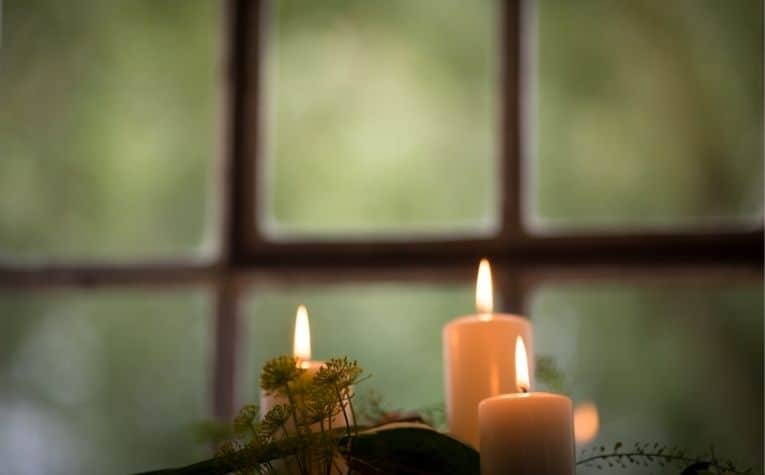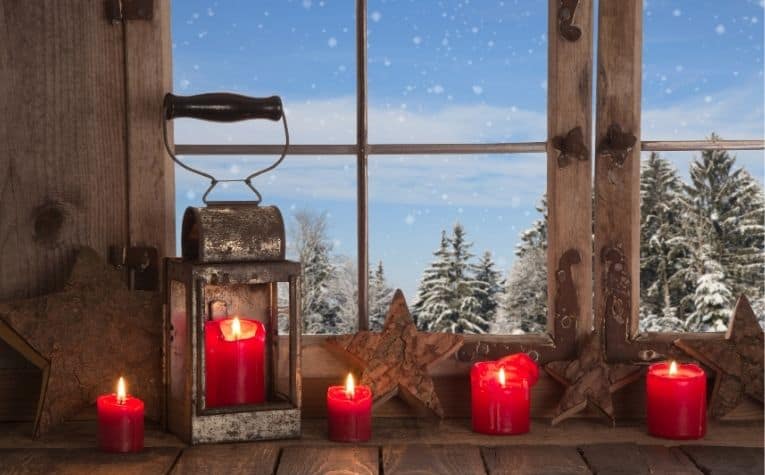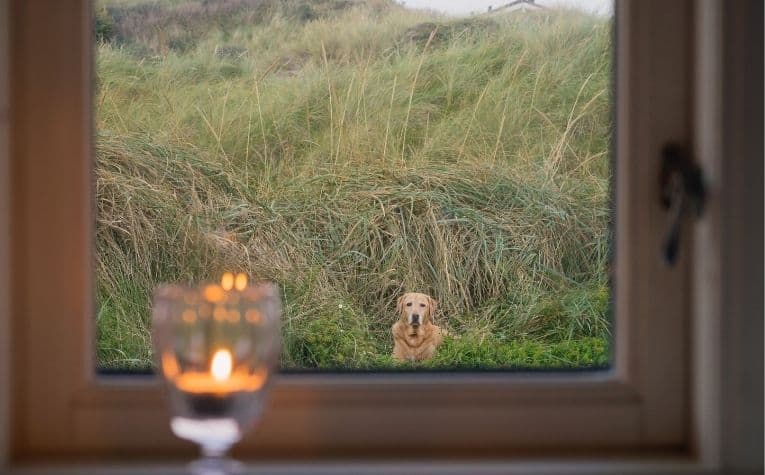Norway is a fascinating Scandinavian country with many interesting and beautiful traditions. Sometimes non-Norwegians observe one of these traditions, but they aren’t sure the significance of it.
One of the traditions that people are curious about is when Norwegians place lights in windows at night.
Norwegians put lights in their windows partly for traditional reasons, as they used to help guide seafarers back to land, and for practical reasons, such as for decoration.
Whatever the motivation, light in the window of a Norwegian home especially during the winter is a beautiful sight to see.
Why is this tradition so prominent in Norway? How did it start? Keep reading to learn more.
Norway is a developed country, but is drinking water safe? See Can you drink tap water safely in Norway? to learn more.

How did the tradition of putting lights in the windows start?
The Norwegian weather, landscape, and its position on the globe play an important role in the establishment of this tradition.
During the dead of the Norwegian winter, the sunrise occurs around 9:30 am and sunset takes place around 3:30 pm.
The limited amount of daylight means that there are only six hours of natural light for Norwegians, many of whom are still at work when daylight fades and the darkness of night settles over the land.
The journey home requires illumination everywhere, including on vehicles, on roads and highways via streetlamps, and on the signs that direct traffic and advertise a business.
Commonly, people’s homes are also lit with electric lights, candles, lanterns, or other lightning that shines into the night.
What is it like living in Norway? See Can You Live in Norway Without Speaking Norwegian? to learn more.

A help to seafaring sailors
The omnipresent darkness of Norway affects not only people on land, but also those at sea.
The light-less water can disorient sailors and frustrate their return to the shoreline where rest from work awaits.
Lights that illuminate the shoreline, including the homes that stand seaside, help to guide seafarers in from the darkness hovering over the coastal waters.
Without an escort from the lights that enable them to see where they’re going, fishermen, for example, could easily run their ships directly into the harbor walls.
It’s also possible that in certain places, a ship could run into a building, even a residence.
Having lights in the windows would have led sailors to steer clear of that spot on the shoreline long before any collision occurred.
Scandinavian terminology can be confusing. See What Is the Difference Between Norse, Nordic, and Norwegian? to learn more.

Lights signal hospitality to some
Lights, especially in a land of great darkness, serve as a beacon to welcome people. They not only mark a particular location, like a home, but in many cases imply warmth, company, food and drink, and lodging.
Lights lure people to escape the night (and often the cold) and invite them to a time of refreshment.
Long ago in Norway, when mountaineers traveled for miles through the frigid, rocky, densely-dark landscape, or seafarers glided through the icy, rumbling, pitch-black fjords, seeing the lights of civilization provided a tremendous morale boost.
Hospitality is one reason window-side lights are such a prominent part of Norwegian evenings. It’s a signal of friendliness and provision to those in need.
Although this act of goodwill may not be on the minds of all modern Norwegians, their ancestors may have done this to help those who are lost.
Like people in other countries, Norwegians are especially social at certain times during the winter, like at Christmas.
Having lights in the windows of homes helps family and friends come and go as loved ones spend time together.
Lights Help Add A Decorative Touch
In addition to being safe, window lights add an artistic flavor to the streets of Norway, especially during the Christmas season.
The light displays can range from the ordinary to the sublime and are a great way to raise morale in the depths of winter.
A condition known as SAD (Seasonal Affective Disorder) is common not just in Norway, but in other Scandinavian and Baltic countries.
The lack of sunlight and Vitamin D affects the mental health of citizens and some speculate that it could lead to a national mental health catastrophe.
The condition is widely known and people are commonly educated about it from a very young age.
To help raise spirits in the season of darkness, a dazzling Christmas light show is a work of art that citizens appreciate.
One of the beautiful parts of Norwegian winters is the abundance of these wonderful lights, and their captivating appearance is one of the country’s finest traditions.
Lights on for safety
Safety isn’t the main reason Norwegians put lights in their windows to illuminate their homes, but it does serve a practical purpose for the tradition.
Norway is a safe place for people to live and visit, but no country is completely immune from crime like burglaries.
Thieves target the winter season to steal from other people and to commit other crimes. The darkness shields their lurking and sinister activity, hiding their mischievous deeds.
Illuminating homes, in part, through placing lights in windows, acts as a natural deterrent to those planning to raid a home.
Illuminating dark spaces is a common security tactic in most countries, but the presence of light in the home is substantially more important in a country with so much darkness.
Is Norway the Only Country That Does This?
Sweden also shares this tradition. Although Norway and Sweden have their own distinct identities complete with their own languages, traditions, and folklore, there are still some commonalities between the two countries.
Due to the nations’ similar weather, Denmark also practices the window-side light tradition. All three nations experience similar winters and have the same and have some of the same traditions arising from the long, arduous season.
Scandinavians Are Crazy About Candles
Since light is such a rare commodity in the Scandinavian world, candles are a staple of the culture.
They’ve been around for thousands of years, far before the electric light, and are subsequently a huge component of everyday life.
In fact, Scandinavians are the world’s biggest consumers of candles. Their love affair with candles stem from the role that nature has had in their lives — darkness in the winter, and abundant sunshine in the summer.
Perhaps no other corner on Earth is as accepting of nature’s prowess as Scandinavians.
Before the electric light replaced the candle, sitting around a natural light source as part and parcel of Norwegian life.
Are the Lights Expensive?
One of the reasons leaving a light in the windowsill is considered strange in other Western countries is due to the price.
Electricity bills can quickly rack up and end up costing a fortune. However, most of these lights are only 30-40w bulbs, which aren’t expensive at all.
LED bulbs are also common and can last an extremely long time.
Final Thoughts
Traditions are a way of life in Scandinavian countries and Norway is no exception. Immensely proud of its traditions, Norway has long embraced their unique stamp on the world.
To be a Norwegian means not only to be born and live in the country, but also to accept and embrace their traditions with outstretched arms.
One of these long-held traditions involves leaving an illuminated window on display during the night time.
Though it may sound strange to others, this act of nighttime illumination has been with the country for hundreds of years.
There are myriad reasons Norwegian people leave lights in their windows.
These can range from general safety to long-held traditions, to helping alleviate a seasonal mental health condition.
